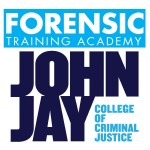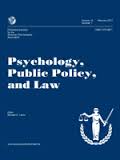 Factors other than overt, juror-expressed partiality appear to influence challenge for cause decisions regarding racial bias in jury selection. This is the bottom line of a recently published article in Psychology, Public Policy, and Law. Below is a summary of the research and findings as well as a translation of this research into practice.
Factors other than overt, juror-expressed partiality appear to influence challenge for cause decisions regarding racial bias in jury selection. This is the bottom line of a recently published article in Psychology, Public Policy, and Law. Below is a summary of the research and findings as well as a translation of this research into practice.
 Featured Article | Psychology, Public Policy, and Law | 2015, Vol. 21, No. 4, 407-419
Featured Article | Psychology, Public Policy, and Law | 2015, Vol. 21, No. 4, 407-419
Challenge for Cause: Bias Screening Procedures and Their Application in a Canadian Courtroom
Author
Regina Schuller, York University
Caroline Erentzen, York University
Alice Vo, York University
David Li, York University
Abstract
Although there is a presumption of juror impartiality in Canadian law, this presumption may be set aside where there is evidence of widespread racial bias in the community from which the jury will be drawn. Following R. v. Parks (1993), defendants are entitled to challenge potential jurors if they believe that racial bias will interfere with the ability of the jurors to judge the case impartially. Although the challenge procedure has been in place for some time, little attention has been given to whether this procedure effectively screens jurors for bias. The present study provides an in-depth examination of the challenge for cause procedure through a detailed analysis of the jury selection phase of a sample of cases that occurred in an Ontario courthouse between 2009 and 2011. A total of 32 defendants and 1,392 prospective jurors were involved in these proceedings. Only a small minority of potential jurors (8.3%) reported that they would be unable to judge the case impartially due to the defendant’s race. Despite this, triers found on average 20.9% of prospective jurors unacceptable, suggesting that something other than expressed bias motivated the determination of juror acceptability.
Keywords
racial bias, jury selection, challenge for cause
Summary of the Research
In Canadian jury selections, potential jurors are presumed to be impartial; however, research suggests that non-White defendants may not be treated impartially. Now, it is permitted for either the Crown or the defense to challenge prospective jurors for racial bias and make a determination of acceptability. “The prospective juror responds to the [challenge] question, and the task of the two triers is to determine whether that individual will be acceptable as a juror. After conferring with each other, the two triers render a decision, which must be unanimous. If the individual is deemed not acceptable by the triers, the individual is excused and the next individual randomly selected from the panel is called forward” (p. 408).
“The procedure requires prospective jurors to self-assess and report whether they would be biased in their decision making by the race of the defendant. In practice, jurors’ responses to the challenge question are limited to a “yes” or “no,” and thus triers are forced to rely on these limited self-assessments to render their determination of partiality. Although the courts agree that racial prejudice often operates nonconsciously and view the challenge process as an important part of the jury selection procedure, the validity of asking this singular question has yet to be successfully challenged” (p. 410). “The present research sought to explore how potential jurors actually respond to the challenge question, including what percent- age of jurors would admit to racial bias in open court, and whether this was influenced by the nature of the crime and the defendant’s racial identity. Moreover, we sought to determine whether it is the case, as stated in R. v. Parks (1993), that triers would be “virtually compelled” to exclude a potential juror who admits to racial bias (para. 38). Are potential jurors excluded for reasons other than their answer to the challenge question? When will Crown and defense counsel exercise their peremptory challenges on prospective jurors who have survived the challenge for cause procedure?” (p. 411).
In an analysis of 1,392 prospective jurors from 23 criminal trials on Ontario, the researchers examined juror responses to the challenge question, and the final decision of acceptability. “Averaging across trials, approximately 6.62% of the prospective jurors indicated that their ability to judge the case “without bias, prejudice, or partiality” would be affected by the race of the defendant (i.e., responded with a “yes” to the challenge question), leaving 93.38% of the potential jurors indicating that they would be able to judge the case impartially” (p. 414). “Of the allegedly unbiased jurors (those who responded “no” to the challenge question), approximately 14% were excluded by triers. It thus appears that determinations of acceptability are based on something more than the juror’s verbal response. To examine just what this might be, we examined whether trier determinations of acceptability were influenced by whether the juror elaborated on or explained their answer, asked to have the question repeated, showed uncertainty, or lacked understanding of the question” (p. 414).
“Of the jurors who reported that they would be able to judge the case without bias, prejudice, or partiality, triers excluded 10.6% (77 of 727) who gave no elaboration on their answer. In comparison, triers excluded 47.4% (18 of 38) of jurors showing some degree of uncertainty, 46.7% (14 of 30) of jurors showing poor comprehension of the question, and 17.2% (5 of 29) of those who explained or elaborated on their answers. Thus, it appears that expressions of uncertainty or lack of understanding were seen as critical concerns for triers. Nearly half of potential jurors showing uncertainty or confusion were deemed unacceptable by triers, but elaboration on an answer alone was not as serious a concern. Thus, it was not the mere departure from a yes/no response that concerned triers, but the possibility that the potential juror could not clearly assert that he or she would be able to judge without partiality” (p. 415).
Translating Research into Practice
The current study sought to gather preliminary answers regarding the disparity between jurors who express impartiality, yet are deemed unacceptable for trial. It appears that, in cases where the juror strays from or elaborates beyond a “yes” or “no” response to the challenge question, he or she becomes more likely to be excluded. Specifically, responses that demonstrated a lack of understanding of the challenge question or responses that expressed uncertainty of ability to remain impartial were excluded almost half of the time.
Legal professionals who engage in jury selection should be aware of this recent finding, as it provides a seeming rationale for exclusion of jurors on the grounds of racial bias, even when they do not overtly reply to the challenge question with a “yes” response, indicating their judgment will be affected by the race of the defendant. Additionally, researchers in this topic area should conduct further investigation into common juror responses that demonstrate uncertainly of ability to remain unbiased or misunderstanding of the challenge question. Perhaps it will become necessary to develop more stringent screening criteria that can serve as a guide to triers who are responsible for approving and excluding jurors. It may be useful to examine the spectrum of these responses, and how they match up to ultimate juror decisions in cases where the defendant is of a minority race. Lastly, it would be interesting to expand the research in this area by obtaining more detailed accounts of triers’ decisions on acceptability, such has asking them to provide individual rationale for why jurors who respond in this ambiguous manner were excluded or accepted.
Other Interesting Tidbits for Researchers and Clinicians
“In addition, we examined whether juror responses differed depending on whether the juror was required to answer in the presence of the jury panel. Most remarkably, in four of the five cases in which the jurors had to respond to the challenge question in the presence of the entire jury panel, not one of the jurors responded in the affirmative. In the remaining case, only one juror answered in the affirmative. This result is striking and suggests that the presence of the panel appeared to have a strong inhibitory effect on jurors’ willingness to self-report potential bias, at least in response to the question that was asked” (p. 414).
The finding that presence of the panel had a large effect on self-report of bias should alert legal professionals to implement and monitor jury screening environments. It appears that jurors respond to the challenge question in a socially desirable manner when placed in a more populated environment, which is not ideal for honest jury selection. “Additional research might assess whether juror responses to the challenge question are affected by having other potential jurors present in the room. Is self-reported bias higher when a juror responds alone as opposed to in the presence of others? What effect might this have on ultimate determinations of the defendant’s guilt? (p. 418).
Join the Discussion
Join the Discussion
As always, please join the discussion below if you have thoughts or comments to add!







